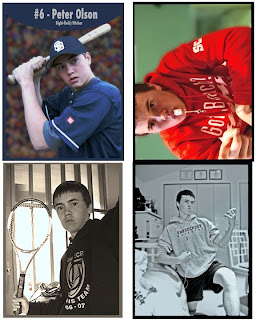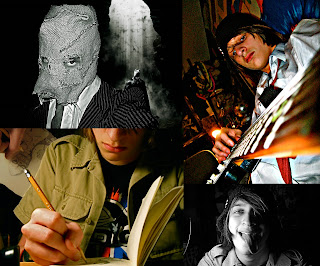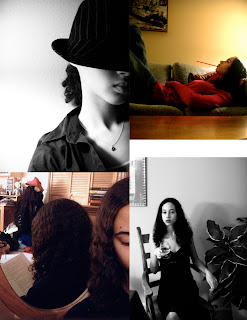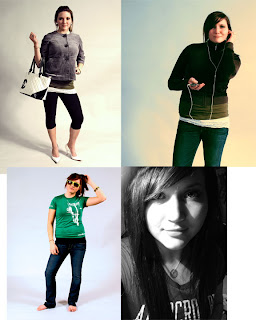"Self Portrait Assignment
The Art of Constructing a Self-Portrait
A
self-portrait comes from within. Injecting 'those we love' into the
portrait steers one away from the harder task to trying to reveal self
without adornment.
If you eat, sleep, and live for speed then your self-portrait should reflect motion and movement as one of its cornerstones.
If you are a reflective type, then reflections and patterns and their intersections should occupy a primary space.
If
overall you feel more flawed then whole, then you wouldn't want to go
about photographing the most pristine parts of yourself; you would want,
instead, to capture your essence in a manner that describes and defines
you without complaining. I say that because the essence of
self-discovery requires you to be a benign observer of self so as not to
hone in too closely on this or that part.
A
sense of 'wholeness' is difficult to capture at best. Indeed, wholeness
is almost impossible for some people to even understand -- let alone
capture in themselves -- because their persons and their lives are so
fragmented, so disorganized in general.
But that is what self-portraiture is all about, capturing the whole -- the whole of who you are as a person.
Try
to be unforgiving in a benign and neutral way. Study yourself in the
mirror and paint what you see there. Then go inside yourself and paint
what you see there."
You will shoot four different self-portraits over break. You need to pick four photo types from the following five categories.
1. A self-portrait where color is emphasized. Color may include wardrobe, location, props, or natural objects. Think of your picture as a one or two color concept picture.
2. A picture that emphasizes lighting and shadows. This will be a grayscale self-portrait.
3. A self-portrait that showcases your interests and hobbies. In this picture we learn what you like to do away from school. Think about what interests you and transfer that into a photo.
4.
A fantasy self-portrait. Dress up and use costumes. In this
self-portrait you can use Photoshop to enhance your picture in any way,
shape, or form. Transfer yourself to Hawaii or become a Viking like you
have always wanted.
5. The Supermodel self-portrait. Dress up like a GQ or Cosmopolitan magazine model. This can be a grayscale or color picture. You will use Photoshop to airbrush and enhance this photo.
Hints for self-portraits:
Use colors or lighting to create a concept.
Costumes or uniforms work great.
Change angles.
Use props.
Vary the lighting.
Try different emotional looks.
Pose in action.
Most
importantly for this assignment don't forget your composition rules.
Use framing, leading lines, rule of thirds, color contrast etc. to
enhance your photo. Fill the frame.





